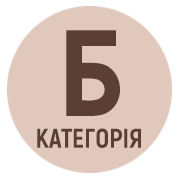ENSEMBLE SOLI (MALE QUARTETS) IN THE CHORAL WORKS OF UKRAINIAN COMPOSERS OF THE BAROQUE AND CLASSICІSM ERA
DOI:
https://doi.org/10.32782/2224-0926-2024-1-48-2Keywords:
chamber vocal ensemble, male vocal quartet, ensemble and choral performance, fourpart ensemble solos in Ukrainian choral music of the Baroque and Classicism eras.Abstract
The article examines one of the stages of the formation of solo male quartet writing in the bowels of choral sacred and paraliturgical music of the Ukrainian Baroque and Classicism era. Representing the predominant composition in the ratio of choral tutti and two- and three-part canto-type solo ensembles, both in the genres of partes and choral concerts and other church compositions, the introduction and increasingly active exploitation of solo male quartets is observed. Based on the analysis of the works of M. Dyletskyi, M. Berezovskyi, D. Bortnyanskyi, A. Vedel and others, many samples have been discovered that demonstrate various types of vocal-ensemble quartet writing. Prototypes of solo male quartets, which were formed in the bosom of choral practice, can be considered: short-term contrasting insertions in the tutti choral texture of low voices (two tenors and two basses) with developed melodic lines; amplification-reinforcement of 4-part composition of 3-part solo ensembles in cadences; juxtaposition in various variants of the micro-choir as Soli and the macro-choir as Tutti, which anticipate the presentation of the material or simulate echoes. Solo quartets are also formed by adding one or two restrained voices (Bourdon type) to a duet or third arrangement in various combinations, most often – isons in the lower voices. Ensembles of the homophonic-harmonic type have either a chord texture, melodically enriched with subvocals, or are decided as a leading solo with accompanying voices. Polyphonic ensembles are built on canonical imitations, used as expositions of fugato, fugue, stretta, etc. There are also 4-voice ensembles of a mixed type. They alternate between quartets of an expressive solo-ensemble type with colorful timbres (an ensemble of soloists) and a homogeneous harmonious choral type without bright timbral differentiation.
References
Бідюкова Б. Особливості ансамблів у хорових концертах А. Л. Веделя. Науковий вісник НМАУ ім. П. І. Чайковського. Київ, 2001. Вип. 11 : Постать Артема Веделя в історико-культурному контексті. С. 109–115.
Воскобойнікова Ю. Інтерпретація творів Д. Бортнянського: тембровий аспект. Вісник КНУКіМ: Зб. наук. Праць. Київ: Видав. Центр КНУКіМ, 2015. Вип. 33. С. 46–51.
Герасимова-Персидська Н. Хоровий концерт на Україні ХVІІ–ХVІІІ ст. Київ : Музична Україна, 1978. 181 с.
Гусарчук Т. Артем Ведель та його рукописна спадщина. Ведель А. Божественна Літургія святого Іоанна Золотоустого та 12 духовних хорових концертів / під ред. В. Колесника. Київ–Едмонтон–Торонто, 2000. 384 с. С. 3–12
Колесник В. Про деякі принципи інтерпретації концертів А. Веделя. Ведель А. Божественна Літургія святого Іоанна Золотоустого та 12 духовних хорових концертів / під ред. В. Колесника. Київ–Едмонтон–Торонто, 2000. С. 25–27.
Куземська Г. Передмова. Херувимська пісня України та її діаспори: Антологія. Київ: КЖД «Софія», 2010. 516 с. 140 іл. С. 15–35.
Петришина Т. Феномен сольного вокального виконавства в українській хоровій духовній музиці доби класицизму. Дисертація на здобуття наукового ступеню доктора філософії за спеціальністю 025 – Музичне мистецтво. Львівська національна музична академія імені М. В. Лисенка. Львів, 2023. 216 с.
Смирнова Т. Хорознавство (історія, теорія, методика): Навчальний посібник. Видання третє, доповнене, Харків: ХНПУ, «Федорко», 2018. 212 с.
Gierasimowa І. Introduction. Nicolaus Dylecki ca. 1630–1690. Vesperae Liturgia Concerti quatuor vocum ed. Irina Gierasimowa. Instytut Muzykologii Uniwersytetu Warszawskiego, Warszawa: Wydawnictwo Naukowe Sub Lupa, 2018. р. 8–37.







